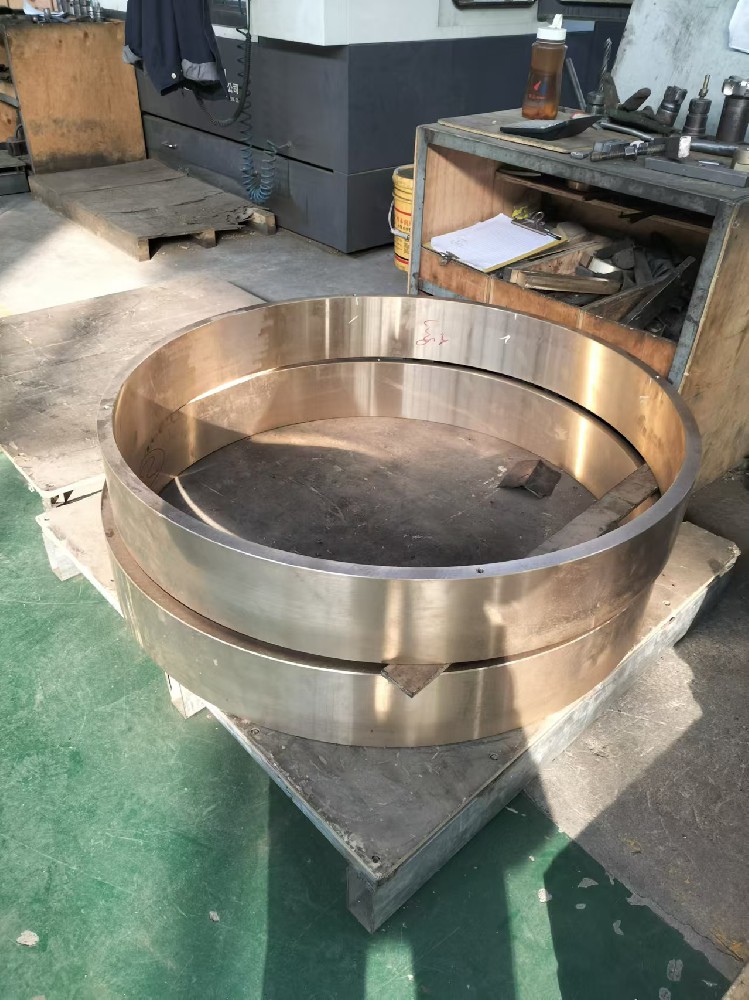 Mazhuang Village, Yuhe Town, Huixian City, Xinxiang City, Henan Province, China
Mazhuang Village, Yuhe Town, Huixian City, Xinxiang City, Henan Province, China
 Service Hotline +86 17630258963
Service Hotline +86 17630258963  Cell phone +86 17630258963
Cell phone +86 17630258963 Fit Gap Test
Install the repaired eccentric copper bushing on the eccentric shaft of the crusher and test the fit clearance between the bushing and the eccentric shaft with a tool such as a tape measure or a dial gauge. The fit clearance should be in accordance with the design requirements, too large or too small will affect the performance of the equipment. For example, too large a clearance may cause the copper sleeve to wobble during rotation, increasing vibration and noise; too small a clearance may increase the friction between the copper sleeve and the eccentric shaft, resulting in increased heat and wear.
Check the precision of the fit between the copper bushing and other components (e.g., frame, bearings, etc.) to ensure that the overall performance of the equipment is not affected after installation. For example, the clearance between the copper bushing and the frame should be even, otherwise it may lead to unbalanced force and affect the stability of the equipment during operation.

No-load running test
Run the crusher installed with repaired eccentric copper bushings in no-load operation test to observe the operation of the equipment. Check for abnormal noise, vibration and heat generation. If there are abnormalities, the copper bushing may have been improperly installed or have quality problems. For example, the abnormal noise may be caused by the poor fit between the copper sleeve and the eccentric shaft or defects inside the copper sleeve; the vibration may be caused by the poor dynamic balance of the copper sleeve or the installation is not solid; the heat may be caused by the excessive friction between the copper sleeve and the eccentric shaft or poor lubrication.
Detect the no-load current, rotational speed and other parameters of the equipment, and compare them with the data before repair to determine whether the performance of the equipment is restored to the normal level. If the no-load current, rotational speed and other parameters differ significantly from those before repair, further inspection and adjustment of the equipment may be required.
Load running test
After the no-load running test is normal, carry out the load running test. Gradually increase the load of the crusher and observe the operation of the equipment. Check for abnormal noise, vibration, heat generation and performance degradation. Load running test can more truly reflect the performance and reliability of the repaired eccentric copper bushing. For example, under high loads, if the copper bushing shows serious problems such as wear, heat or deformation, it may be necessary to recondition or replace the bushing.
Test the load current, output, crushing effect and other parameters of the equipment, and compare them with the data before reconditioning to assess whether the performance of the reconditioned equipment meets the production requirements. If the load current is too high, the output decreases or the crushing effect is poor, it may be necessary to further optimize the operating parameters of the equipment or check whether there are problems with other components.
